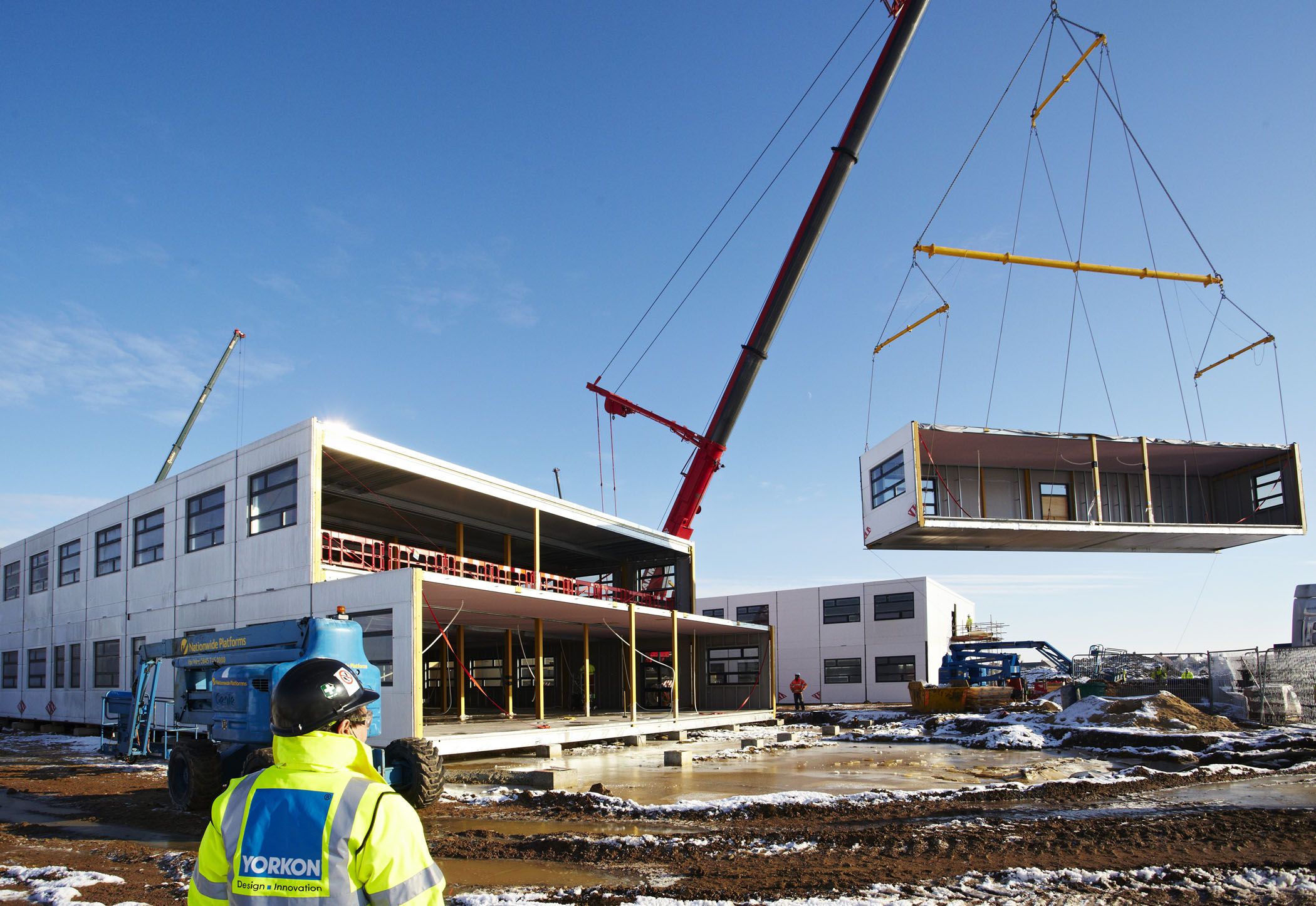Off-site construction
The phrase 'off-site construction' refers to the completion of elements or components of a construction project at a different location to where they will be permanently installed. Typically, this can involve planning, design, fabrication and assembly in purpose-built off-site factories. The completed item is then transported to site and assembled in place.
Off-site locations may be permanent manufacturing facilities, or 'flying factories', that is, temporary facilities that operate for the duration of a project and then 'fly' to a new location to service another project.
Off-site construction is often referred to as 'prefabrication', 'off-site manufacture' or 'modern methods of construction', and it may involve modular construction. It is most commonly concerned with permanent structures rather than temporary or relocatable structures.
Mark Farmer's 2017 report 'Modernise or die' adopted the term 'pre-manufacture' as '...a generic term to embrace all processes which reduce the level of on-site labour intensity and delivery risk', and suggested that this could range from '...component level standardisation and lean processes through to completely pre-finished volumetric solutions'.
Off-site construction has increasingly been promoted as a solution to many of the problems facing the UK construction industry. This is because of the significant time-efficiencies that can be achieved through using off-site techniques, as well as better safety, reduced waste, higher quality, reduced down time and so on.
Off-site construction is particularly suited to high-volume, repetitive components, or products that require factory conditions to achieve the desired level of quality. It is widely considered that housing should be an obvious target for off-site construction.
However, the initial set-up costs can be high, and it can be difficult to maintain a sufficiently consistent pipeline of demand to suit assembly line production methods. Transport costs can also be high. In addition, there have been lingering concerns regarding the label 'prefabricated' as a result of poor-quality mass-produced housing that was pre-fabricated following the second world war, as well as the Ronan Point collapse in 1968.
Modernise or die looked forward to a fourth industrial revolution underpinned by cyber-physical ‘smart’ production techniques, which it described as 'Industry 4.0’. However, it acknowledged that in many respects, construction has yet to achieve ‘Industry 3.0’ status, which would simply require large scale use of electronics and IT to automate production.
[edit] Related articles on Designing Buildings
- Advanced manufacturing.
- BSRIA launches Offsite Construction for Building Services topic guide.
- Construction problems avoided by using a modular approach.
- Design for Manufacture and Assembly (DfMA).
- Flying factory for construction works.
- In situ.
- Modern methods of construction.
- Modular buildings.
- Modular construction market report 2020-2026.
- Off site materials.
- Offsite manufacturing.
- Off-site manufacturing.
- Offsite manufacturing and standardised design.
- Off-site manufacture for construction: Building for change.
- Off site, on track.
- Off-site prefabrication of buildings: A guide to connection choices.
- Prefabrication.
Featured articles and news
RTPI leader to become new CIOB Chief Executive Officer
Dr Victoria Hills MRTPI, FICE to take over after Caroline Gumble’s departure.
Social and affordable housing, a long term plan for delivery
The “Delivering a Decade of Renewal for Social and Affordable Housing” strategy sets out future path.
A change to adoptive architecture
Effects of global weather warming on architectural detailing, material choice and human interaction.
The proposed publicly owned and backed subsidiary of Homes England, to facilitate new homes.
How big is the problem and what can we do to mitigate the effects?
Overheating guidance and tools for building designers
A number of cool guides to help with the heat.
The UK's Modern Industrial Strategy: A 10 year plan
Previous consultation criticism, current key elements and general support with some persisting reservations.
Building Safety Regulator reforms
New roles, new staff and a new fast track service pave the way for a single construction regulator.
Architectural Technologist CPDs and Communications
CIAT CPD… and how you can do it!
Cooling centres and cool spaces
Managing extreme heat in cities by directing the public to places for heat stress relief and water sources.
Winter gardens: A brief history and warm variations
Extending the season with glass in different forms and terms.
Restoring Great Yarmouth's Winter Gardens
Transforming one of the least sustainable constructions imaginable.
Construction Skills Mission Board launch sector drive
Newly formed government and industry collaboration set strategy for recruiting an additional 100,000 construction workers a year.
New Architects Code comes into effect in September 2025
ARB Architects Code of Conduct and Practice available with ongoing consultation regarding guidance.
Welsh Skills Body (Medr) launches ambitious plan
The new skills body brings together funding and regulation of tertiary education and research for the devolved nation.
Paul Gandy FCIOB announced as next CIOB President
Former Tilbury Douglas CEO takes helm.
UK Infrastructure: A 10 Year Strategy. In brief with reactions
With the National Infrastructure and Service Transformation Authority (NISTA).























